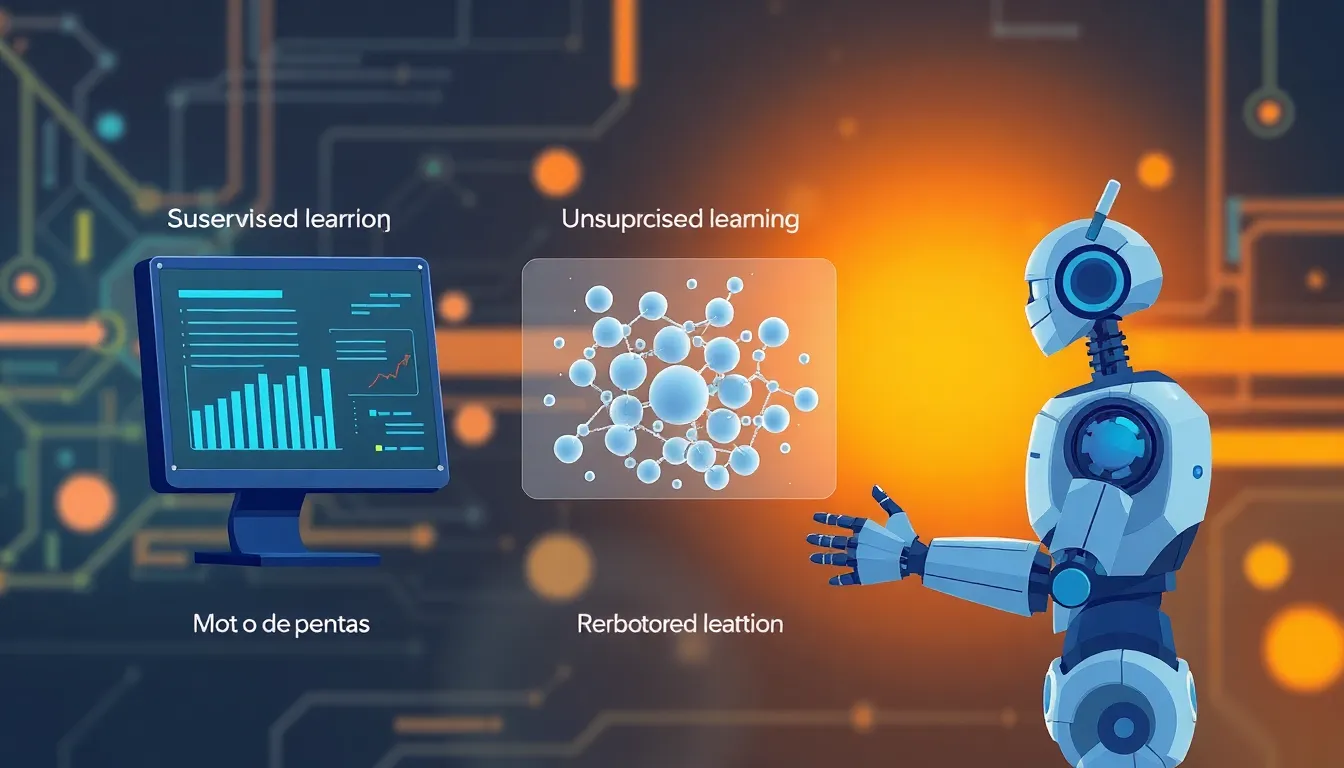In today’s data-driven world, machine learning has emerged as a game changer. It empowers businesses and individuals to harness vast amounts of data, transforming it into actionable insights. As technology evolves, understanding machine learning becomes essential for anyone looking to stay ahead.
This tutorial is designed to guide readers through the fundamentals of machine learning, breaking down complex concepts into digestible pieces. Whether someone is a complete beginner or has some experience, this resource will provide the knowledge needed to navigate the exciting landscape of machine learning. Get ready to unlock the potential of algorithms and data, and dive into a world where machines learn and adapt.
Table of Contents
ToggleOverview of Machine Learning Tutorials
Machine learning tutorials offer structured guidance for understanding and applying machine learning concepts. These resources cater to various skill levels and aim to break down complex topics into manageable segments.
What Is Machine Learning?
Machine learning refers to a subset of artificial intelligence that enables systems to learn from data and improve their performance over time. It involves algorithms that identify patterns and make predictions based on input data. Popular machine learning types include supervised learning, unsupervised learning, and reinforcement learning, each serving different purposes in data analysis.
Importance of Learning Machine Learning
Learning machine learning equips individuals with essential skills for today’s job market. Businesses increasingly rely on data-driven decisions, making knowledge of machine learning vital for roles in data science, engineering, and analysis. Understanding machine learning fosters innovation, enhances problem-solving capabilities, and opens opportunities in various industries, from healthcare to finance.
Types of Machine Learning


Machine learning encompasses various types, each serving distinct purposes and applications. The primary types include supervised learning, unsupervised learning, and reinforcement learning.
Supervised Learning
Supervised learning teaches algorithms using labeled datasets. The model learns to map input data to the correct output by processing examples with known answers. Applications include image recognition, spam detection, and predicting house prices. Common algorithms include linear regression, decision trees, and support vector machines.
Unsupervised Learning
Unsupervised learning deals with unlabeled data, enabling algorithms to identify patterns and group data without prior knowledge of outcomes. Techniques like clustering and association help uncover hidden structures within the data. Applications range from customer segmentation to anomaly detection. Popular algorithms include k-means clustering and hierarchical clustering.
Reinforcement Learning
Reinforcement learning focuses on training agents to make decisions through trial and error. The agent receives feedback in the form of rewards or penalties, allowing it to optimize its actions over time. This type of learning plays a critical role in areas like robotics, gaming, and autonomous vehicles. Notable algorithms include Q-learning and deep Q-networks.
Key Concepts in Machine Learning
Understanding key concepts in machine learning provides a solid foundation for applying this technology effectively. This section discusses essential components, including algorithms, data preprocessing, and model evaluation techniques.
Algorithms and Models
Algorithms serve as the backbone of machine learning, dictating how models learn from data. Common algorithms include:
- Linear Regression: Used for predicting continuous values based on one or more variables.
- Decision Trees: Facilitate classification and regression through a tree-like model of decisions.
- Support Vector Machines: Efficiently classify data by finding the optimal hyperplane separating different classes.
- Neural Networks: Mimic human brain structure to recognize complex patterns in data.
Models generated from these algorithms allow for diverse machine learning applications. Choosing the right algorithm involves considering the data characteristics and the specific problem being solved.
Data Preprocessing
Data preprocessing significantly impacts model performance. Crucial steps include:
- Data Cleaning: Removing or correcting inaccuracies, duplicates, or irrelevant information from datasets.
- Data Transformation: Normalizing or scaling numerical values to ensure consistency across features.
- Feature Selection: Identifying and retaining only the most relevant variables, reducing complexity and overfitting risks.
- Encoding Categorical Variables: Converting categorical data into numerical formats, making it suitable for algorithms.
Effective data preprocessing enhances the quality of input data, leading to improved models and accurate predictions.
Model Evaluation Techniques
Model evaluation techniques assess a model’s performance and accuracy. Essential methods include:
- Cross-Validation: Dividing the dataset into subsets to test the model’s performance on different data segments. This technique helps in mitigating overfitting.
- Confusion Matrix: Visual representation of actual versus predicted classifications, providing insight into model accuracy across different classes.
- Precision and Recall: Precision evaluates the correctness of positive predictions, while recall measures the model’s ability to identify all relevant instances. Both metrics are crucial for understanding model effectiveness.
- F1 Score: The harmonic mean of precision and recall that balances the two measures, especially useful for imbalanced datasets.
Selecting appropriate evaluation techniques is key to ensuring models perform well on unseen data.
Popular Machine Learning Tutorials
Various tutorials cater to different skill levels in machine learning. These resources help individuals effectively build their understanding and application of machine learning concepts.
Beginner-Friendly Resources
- Coursera – Machine Learning by Andrew Ng: This highly-rated course provides foundational knowledge in machine learning, covering key concepts and practical applications. It features hands-on assignments and a focus on algorithms used in real-world scenarios.
- edX – Introduction to Artificial Intelligence (AI): Offered by IBM, this course gives a broad overview of AI and machine learning. It’s designed for those new to the field, introducing essential terminology and fundamental principles.
- Google’s Machine Learning Crash Course: This free resource offers a concise introduction to machine learning. It includes video lectures and interactive exercises, making it accessible for beginners seeking quick insights.
Intermediate Level Courses
- Udacity – Intro to Machine Learning Nanodegree: This course targets individuals with some understanding of machine learning. It covers supervised and unsupervised learning, and incorporates projects to solidify the learning experience.
- DataCamp – Machine Learning with Python Track: This guided learning path provides interactive exercises on Python-based machine learning. It explores various algorithms and data manipulation techniques necessary for intermediate learners.
- Kaggle – Micro-courses: These short courses cover specific topics in machine learning, including feature engineering and model evaluation. They provide practical, hands-on experiences ideal for those familiar with basic concepts.
Advanced Machine Learning Tutorials
- Coursera – Advanced Machine Learning Specialization: Offered by the National Research University Higher School of Economics, this series advances concepts such as deep learning and reinforcement learning, targeting experienced practitioners.
- Fast.ai – Practical Deep Learning for Coders: This course emphasizes a hands-on approach to deep learning. It focuses on real-world projects, helping students gain practical experience in deploying machine learning models.
- Stanford University – CS229: Machine Learning: This renowned graduate-level course delves into theoretical aspects of machine learning and provides a comprehensive study of algorithms. It’s designed for learners with a strong mathematical foundation, covering complex topics in depth.
Tools and Libraries for Machine Learning
Machine learning relies heavily on various tools and libraries, which facilitate the development and implementation of models. These resources streamline tasks such as data manipulation, model training, and evaluation.
Overview of Python Libraries
Python dominates the machine learning landscape, offering robust libraries that simplify complex tasks. Key libraries include:
- TensorFlow: This open-source library provides comprehensive tools for deep learning and neural network development. It supports both research and production.
- Keras: Known for its user-friendly interface, Keras simplifies building neural networks and is accessible for beginners.
- Scikit-learn: This library provides a wide array of user-friendly tools for traditional machine learning algorithms. It excels in preprocessing, model fitting, and evaluation.
- Pandas: This library streamlines data manipulation and analysis, making it an essential tool for data scientists.
- NumPy: This fundamental library enhances numerical computing capabilities, enabling efficient handling of large datasets.
Introduction to R for Machine Learning
R serves as another powerful tool for machine learning, particularly in statistical analysis and data visualization. Key aspects include:
- Caret: This package streamlines the model training process by providing a unified interface for various algorithms and preprocessing methods.
- randomForest: This package implements the popular random forest algorithm, which is effective for classification and regression tasks.
- ggplot2: This versatile data visualization package offers extensive capabilities for creating informative and aesthetically pleasing graphics.
- dplyr: This library simplifies data manipulation tasks, enabling efficient data wrangling.
Leveraging these tools and libraries empowers practitioners to develop and refine machine learning models effectively.






